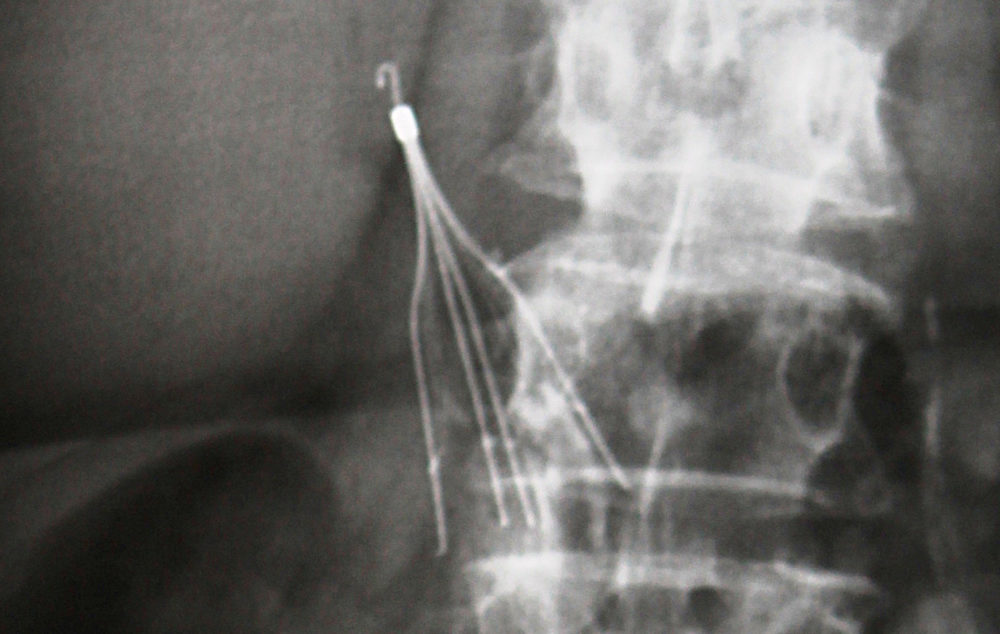Bard IVC Blood Clot Filter Lawsuit Filed as MDL Organized

Since a panel of federal judges decided last month to consolidate all blood clot filter lawsuits filed against C.R. Bard as part of a multidistrict litigation (MDL), the number of cases pending nationwide has continued to increase.
The U.S. Judicial Panel on Multidistrict Litigation (JPML) issued a transfer order on August 17, directing that all Bard Recovery IVC filter lawsuits and all Bard G2 IVC filter lawsuits filed throughout the federal court system be centralized for pretrial proceedings before U.S. District Judge David G. Campbell in Arizona.
At the time, there were about two dozen cases pending in U.S. District Courts nationwide. However, it is ultimately expected that several hundred, if not thousands, of complaints will be filed on behalf of individuals who experienced complications from IVC blood clot filters, where the small devices designed to prevent a pulmonary embolism fractured or broke inside of the vena cava.

Learn More About
Design Problems with Certain IVC Filters Linked to Severe Injuries. Lawsuits Reviewed Nationwide.
Learn More About this Lawsuit See If You Qualify For CompensationEach of the lawsuits involve similar allegations, claiming that Bard manufactured and sold a defectively designed and unreasonably dangerous vena cava filter to catch blood clots that may break free elsewhere in the body. Plaintiffs claim that the legs or struts of the blood clot filter punctured the vena cava, broke off or migrated to other areas of the body.
A new complaint (PDF) filed this week by Mary and James Duffie, of Georgia, is the latest to join the litigation. The lawsuit indicates that Mary Duffie had to undergo open heart surgery in January 2014, when a leg from her Bard G2 filter broke off and perforated her heart. Much of the rest of the Bard IVC blood clot filter, implanted in 2008, was removed as well, but one leg of the filter was never found and is assumed to still be wandering inside of her body, where it could one day do significant harm or even prove fatal.
The lawsuit indicates that Duffie suffered permanent injury, significant medical expenses, loss of wages and earning potential, pain, suffering, loss of enjoyment of life, emotional trauma and her ability to handle her daily life has been impacted and diminished.
An NBC News investigative report airing this week indicates that dozens of deaths and hundreds of similar injuries have been linked to Bard blood clot filters.
The report also indicates that Bard knew for years about the risk of problems with its IVC filters, particularly the Bard Recovery filter, which was the first generation design on which the Bard G2 filter was based.
NBC News indicates that Bard knew it had problems with the blood clot filters migrating or fracturing, but failed to warn the public, continuing to sell them to thousands of patients. In addition, NBC news reports that at least one employee of the company said that officials ignored warnings from its own scientists and even resorted to forging the employees name on paperwork greenlighting the filter.
IVC Blood Clot Filter Concerns
Inferior vena cava (IVC) filters are small medical devices shaped like a spider, which are designed to “catch” blood clots and prevent them from traveling to the lungs and causing a pulmonary embolism.
The Bard Recovery and G2 filters were designed to be retrievable, but many plaintiffs allege that the manufacturer failed to adequately warn about the importance of removing the filter once the risk of a blood clot has passed, as the risk of problems may increase the longer the device is in place.
In August 2010, the FDA issued a warning about the risk of IVC filter problems, indicating that the agency had received hundreds of adverse event reports where filters broke free and travelled to other areas of the body or caused other injury.
A study published in the medical journal JAMA Internal Medicine in March 2013 raised questions about the effectiveness of IVC filters, indicating that less than 10% of filters evaluated in the study were successfully removed from patients and 8% of recipients of IVC filters suffered a pulmonary embolism despite the device’s presence.
In May 2014, the FDA urged doctors to remove IVC filters within about one to two months after the risk of a pulmonary embolism has passed, suggesting that many doctors were not adequately warned about the importance of retrieving the devices.
As part of the coordinated pretrial proceedings in the Bard IVC litigation, it is expected that a small group of cases will be prepared for early trial dates. Known as “bellwether” cases, the outcomes are designed to help the parties gauge how juries may respond to certain evidence and testimony that may be repeated throughout the litigation, potentially promote IVC filter injury settlements to resolve cases brought by individuals who have experienced problems.
Get more articles like this sent directly to your inbox.
"*" indicates required fields






0 Comments